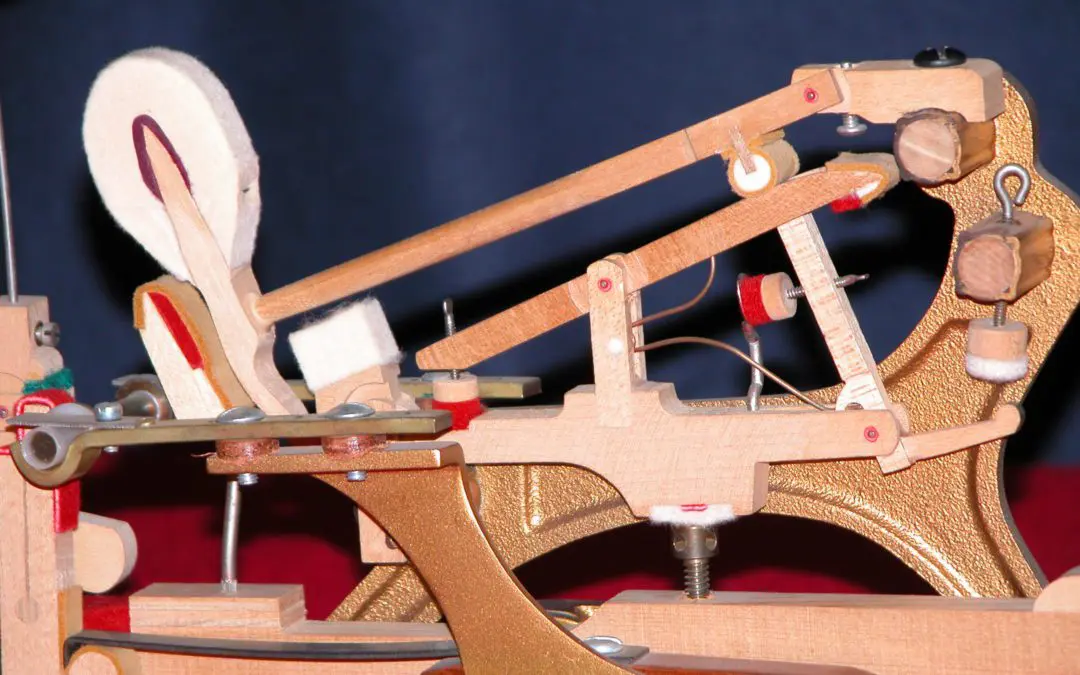As a member of the Piano Technicians Guild, I have attended and presented at many piano technical seminars. The number 10,000 often comes up as an approximate number of parts in a modern piano. At the C F Theodore Steinway Music Academy in New York, I heard numbers approximating 10,500 parts. Where are these parts and what do they do?
The piano is an amazing piece of art and engineering, a remarkable mechanism. Through antiquity, the Greek Muses picked the strings of the Lyre (much like the method by which guitar strings are played with a pick). These Lyrists accompanied readings of poetry, provided musical entertainment at parties, soothed the sick and played at ceremonies of many kinds. They did so on a simple strung instrument made of a sound chamber (sometimes a turtle shell), two raised wooden arms, a crossbar or yoke, gut strings, a bridge and a tailpiece.
Fast forward a few thousand plus years to another strung but percussive instrument used for all musical purposes, the modern piano. With 236 or so individual strings, it is capable of a wide dynamic range owing to tension of eighteen to thirty tons, depending upon the size of the instrument. To contain this tremendous tension, a massive wooden frame (rim) and beam structure is used. The mechanism that delivers piano hammers to the strings employs piano keys resting upon a felted and pinned keyframe, and a cradle with a mechanical device known as the action. The piano action consists of 88 wippens (repetitions) and the piano hammer mechanism. These are the parts that move when piano keys are depressed. A damping system raises and lowers dampers as notes are played. They may be operated by individual piano keys or by a foot pedal that allows for sustaining and dampening of sound. Another pedal shifts the action to change the tonal character.
Cabinetry includes the top, music desk and rack, legs, pedal lyre, fallboard (nameboard), key-slip, cheek blocks and more. It is not difficult to imagine that there might be 10,000 parts making up the modern piano!
The challenge for an accomplished piano technician is to optimize feel and sound, then replicate the touch sensation and tone color present in all notes. The terms for the process of adjusting touch and tone in a piano are regulation and voicing. Both processes require multiple subtle adjustments to all 88 notes…keys and piano hammers. The many expressions that the piano is capable of producing are made possible by the complexities and engineering of fine pianos, cared for by piano technicians making critical adjustments, and played by accomplished pianists.
-JC

